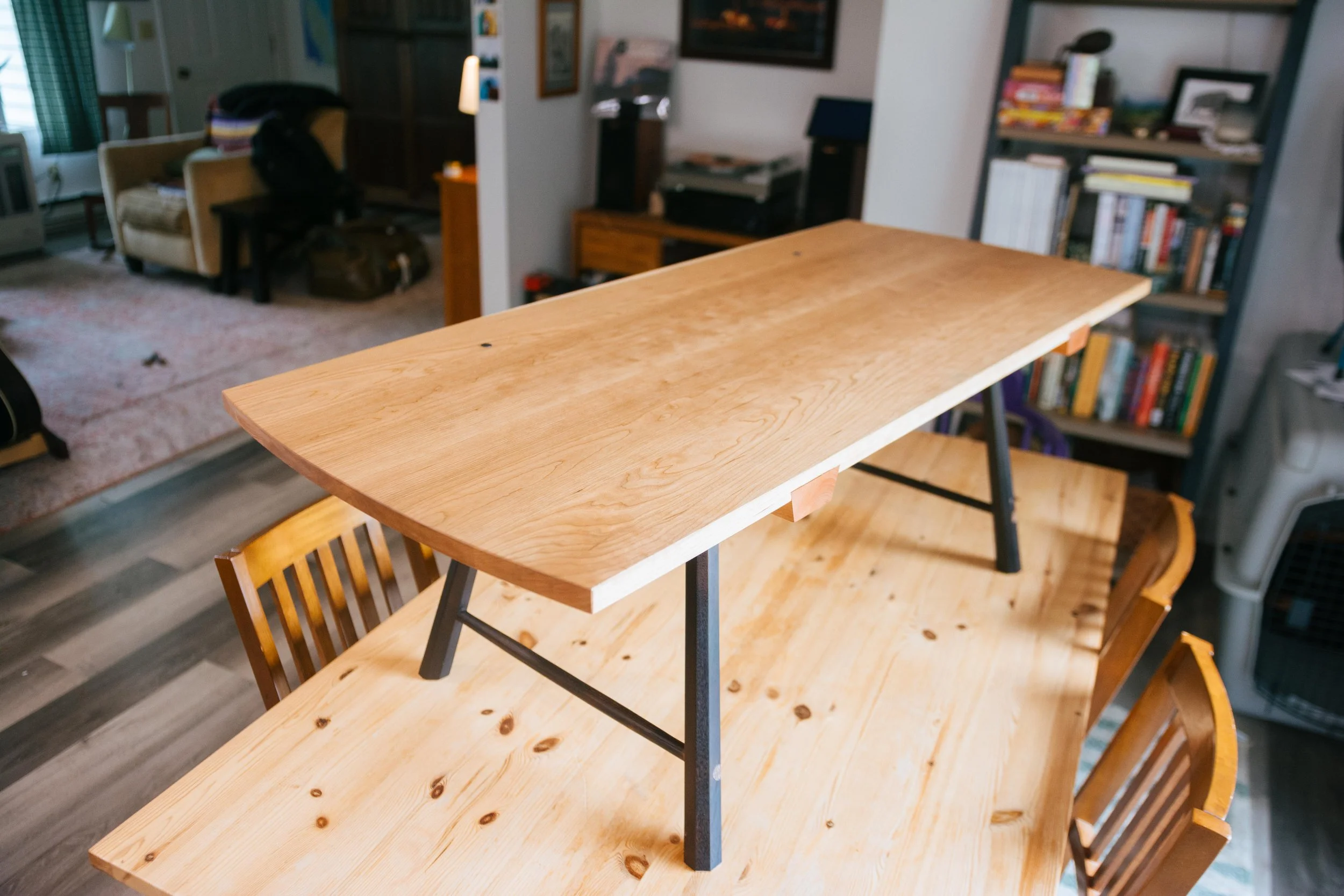Coffee Table
A dining table, a bedframe, a couch, and a bookcase; save the bedframe, it is all secondhand. That is the short, near-complete list of furniture I owned when K and I moved back to Juneau. Add her purple chair and a bookshelf, and we had a sparsely adorned home. Those few pieces of furniture were cobbled together in my second and third apartments. Committed to living situations for short stints, I learned the premium that is space in a moving trailer. I never felt like I was missing a coffee table. There is, after all, little utility in a coffee table.
In short order, upon moving to Juneau, with K’s direction, we had a coffee table. It was a Marketplace find made chiefly of composite and shoddily built. It was a behemoth of a coffee table, leaving less room to navigate our living room than either of us desired. But, we had a place to pile our books, candles, computers, and often feet hanging from the couch. A great holdover.
I broke that table. Pushed too hard and busted one of the only pieces of real wood on the thing. It wobbled a little extra, and we started the passive search for another. The thing about Juneau is that few institutions are adding furniture to the area. And, again, the coffee table is not the highest on anyone’s list of necessary furniture. It would be charitable to say Juneau’s Marketplace or Craigslist carry any “selection” of furniture. And even less so for decent coffee tables.
I promised K a desk for Christmas to make her work-from-home situation more enjoyable. I bought just enough cherry lumber to build the medium-sized piece with a bunch of gluing and milling, which I frankly enjoy like a stick in the eye. With less gluing, we could have a smaller, one-of-a-kind coffee table for the house.
Inspired by the batten construction of Chris Schwarz’s “Work Table” and carrying the techniques he preaches in several of his books for chair making, I dreamed up a simple design. I snuck a few measurements from the pressed-out monster living in our living room, being sure to shrink it on all sides so that we could navigate the living room.
The construction was very satisfying. I wanted to employ as many hand tools as possible for this build. Things were off to a great start with my 1890’s Stanley #6 jointing the four boards that make the top. With the glue drying, I roughed out the two cherry battens, four maple leg blanks, and the two ash stretchers. Hogging out the slots for the battens was the most challenging process without a proper router plane (I started to build one myself but was overcome by time). A chisel and mallet worked fine; it just took a little longer to sneak up on the proper depth and if someone ever pulls the battens from their dovetailed slots they wont ’t be impressed by the finish hidden underneath.
The construction process was all about square and parallel up to the point of drilling the mortises for the tapered tenons that comprise the leg structure. This was my second try at drilling rake and splay on a four-legged thing, and I am pretty pleased with how it went. The stretchers were the first real issue of the whole project. I ripped them out of stock, whittled the squares into octagons, and eventually to dowels with my #5 Stanley. But then I got greedy trying to fit one to a leg and snapped it in half. With one side already glued and wedged, it was a hopeless attempt to extract the broken piece without marring the leg beyond use. I did mar it and dropped the other half, badly damaging it before deciding to make two new legs. It was good practice, if nothing else.
With the legs glued, and all parts touched up with sandpaper, edges broken with sandpaper, I hastily slapped a finish all over the piece. Unable to contain myself, the finish was barely dry enough to handle when I carried it out to present to K as a Christmas eve surprise.





